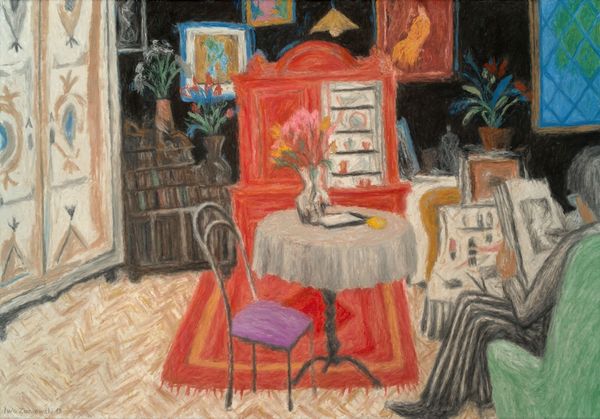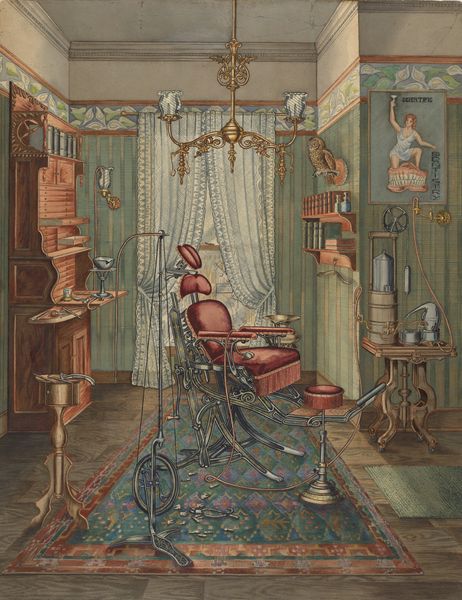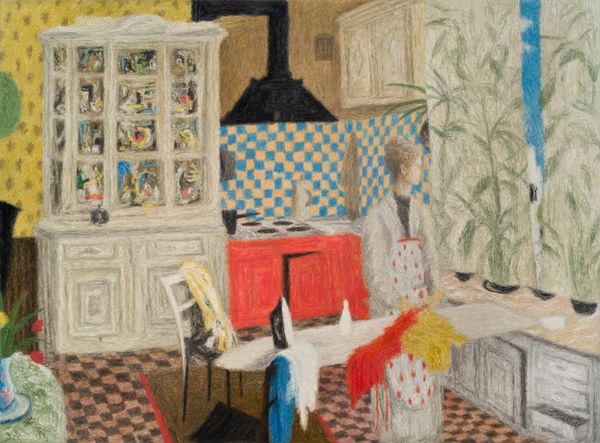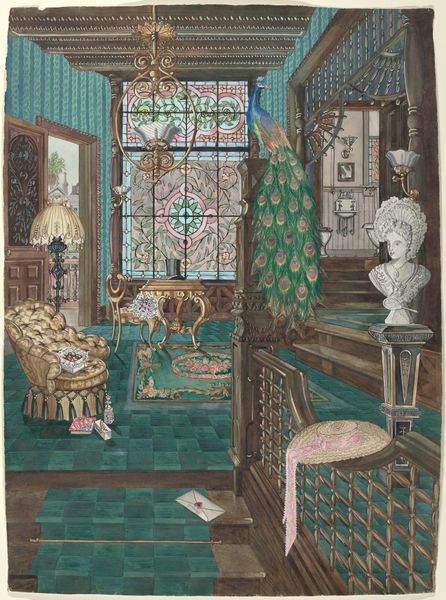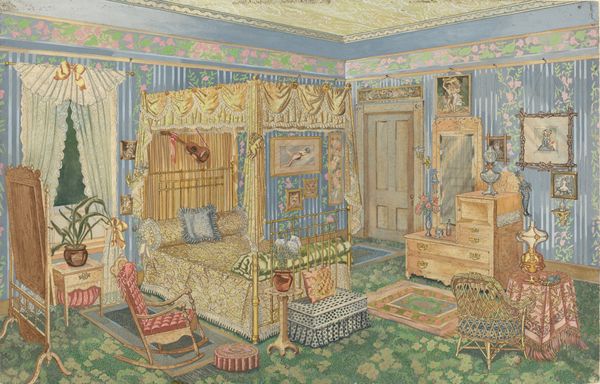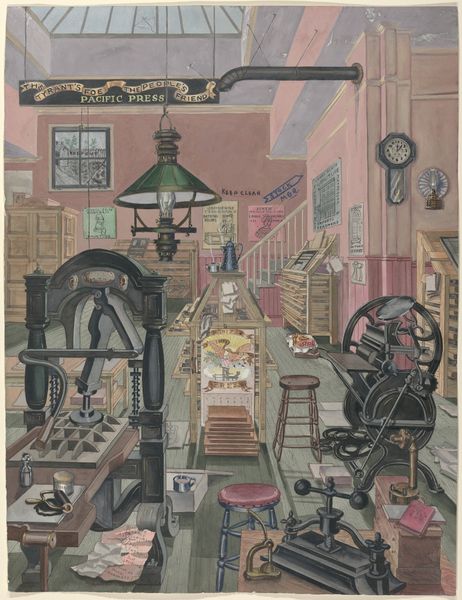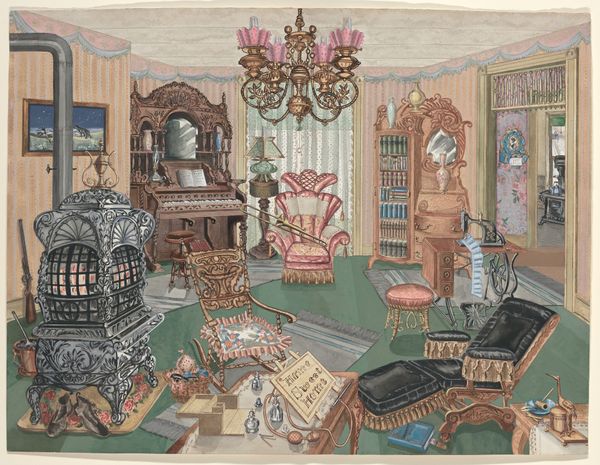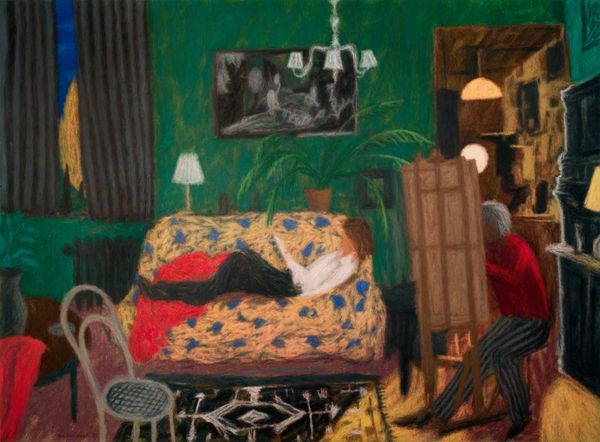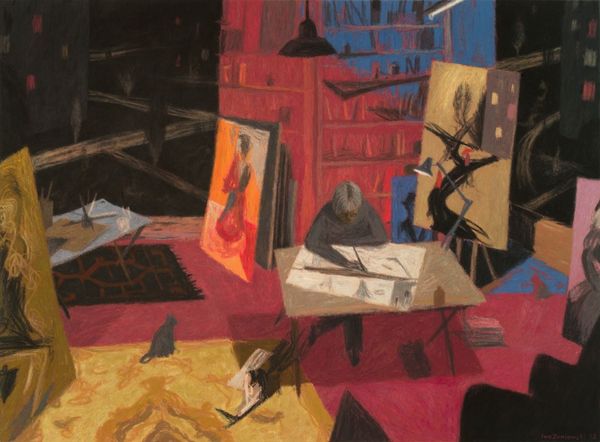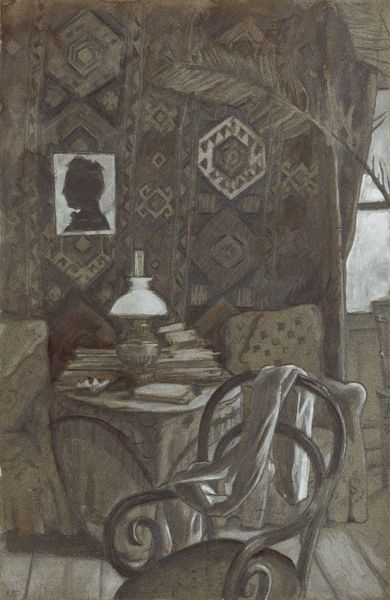
drawing, mixed-media, watercolor
#
drawing
#
mixed-media
#
folk art
#
watercolor
#
watercolour bleed
#
genre-painting
#
academic-art
#
mixed medium
#
mixed media
#
watercolor
Dimensions: overall: 56.7 x 45.7 cm (22 5/16 x 18 in.)
Copyright: National Gallery of Art: CC0 1.0
Curator: Look at this curious and somewhat unsettling interior rendered by Perkins Harnly between 1935 and 1942, titled "Sitting Room". Editor: My immediate reaction is a kind of anxious claustrophobia. There’s just so much stuff—the patterned wallpaper, the crammed furniture—it all feels very stifling. Curator: It’s certainly an intense composition. Harnly created this using a mixed media of watercolor and drawing, layering detail upon detail to evoke, perhaps, a very specific kind of American domesticity. To me, the piece resonates with certain intersectional feminist questions around labor, interiority, and the decorative arts in the lives of women in this era. Editor: That’s interesting. I'm drawn more to the iconography—the overt symbols of status and leisure. Consider the phonograph, draped with floral patterns echoing the wallpaper, seemingly the epicenter of the scene. Is it meant to be a nostalgic emblem of gentility in a changing world? The American flag is partially obscured by wheat or dried flowers, implying perhaps some tensions associated with traditional values. Curator: I agree. And it's worth examining how this room becomes a stage for performing social class, particularly during the Depression era. It is a room replete with references to past empires: neoclassical furniture, decorative wallpaper inspired by 18th-century French textile, and an overwhelming layering of symbolic objects speaking to privilege and taste, so conspicuously accumulated and performed. But who gets to participate in this theater of the interior? And at what cost? Editor: Exactly. This cacophony of styles reminds me how symbols can be multivalent. For example, the framed paintings within the room's composition operate almost like windows onto other worlds—landscapes of aspiration and escape, perhaps reflecting desires that this room both satisfies and frustrates. Even the light fixture looks like an otherworldly insect hovering above everything. Curator: Right! And notice that despite the seemingly accessible domestic genre painting, the perspective is distorted. There’s no central figure. Where do we situate ourselves, as viewers, within this already overwrought space, rendered at once intimate and unsettling? Harnly confronts us with issues surrounding women and representation as we contend with social history. Editor: Looking at it this way provides interesting entry points to think about how the values we ascribe to objects, our shared cultural narratives, continue to influence us and this very loaded and chaotic space invites us to unpack those inherited stories.
Comments
No comments
Be the first to comment and join the conversation on the ultimate creative platform.

